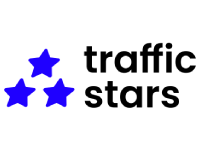Introduction to PHP and MYSQL – Part 1
PHP and MYSQL have captured the attention of developers of Internet applications all across the world. In combination with each other, these two easily acquired development environments provide all the tools necessary to create powerful, scaleable and cross platform applications.
MYSQL is a relational database management system (RDBMS) that is used to store data using the paradigms first introduced by Dr.PHP and MYSQL have captured the attention of developers of Internet applications all across the world. In combination with each other, these two easily acquired development environments provide all the tools necessary to create powerful, scaleable and cross platform applications.
MYSQL is a relational database management system (RDBMS) that is used to store data using the paradigms first introduced by Dr. E. F. Codd at IBM’s San Jose laboratories in the late 1960’s and the entity relationship-modeling schema of Dr. Peter Chen. Providing a standard structured query language (SQL) interface to retrieve, store and modify data, MYSQL is the de facto standard among PHP developers worldwide. The multi-user, multi-threaded server has been a work in progress since 1979 and has been publicly available since 1996.
PHP was developed by Rasmus Lerdorf in 1994 as a way to develop dynamic Personal Home Pages and was in use on over 9,000,000 domains across the world as of May 2002. Developed as a server-side scripting language, PHP may be used sparingly throughout an existing HTML web page or used to create and deliver completely dynamic HTML documents. The current version of this robust, open sourced programming language contains support for sessions, database integration, true object-oriented classes and can be compiled as an Apache module or an ISAPI module for the Windows IIS server.
Many developers disagree on what the most powerful features of the dynamic duo of Internet development are, but the one thing that all developers agree on is that there is nothing better on the market for the price. While these two tools rival, and on some levels exceed the expectations of the expensive costs of Microsoft technologies, they cost nothing but the time it takes to become proficient with them. Not only are these systems available for free, they are both open source tools. Simply put, all of the source code for these tools is publicly available and advanced developers can modify this code for their own use.
Experienced developers will find the basic constructs of PHP/MYSQL simple enough to become productive in a single weekend. Novice developers with nothing more than HTML experience can, with a bit of effort, courage, and determination, transform any static page into a dynamic experience that will keep patrons of their websites returning day after day to experience a robust web surfing experience.
PHP/MYSQL support websites and forums are available on the World Wide Web. I recommend that users become familiar with the online documentation available at www.mysql.com and www.php.net. These are two locations that I constantly use as a reference while working on my day-to-day projects. For those of you looking for open source applications ranging from affiliate programs to gallery generation tools, advertising management and discussion forums, browse through the offerings at www.sourceforge.net.
For those of you that frequent IRC, each Friday there is a script school discussion on irc.webmasterlive.com in room #scriptschool. The first lessons are available at www.adultnetsurprise.com/learningzone and Script School itself can be found at www.scriptschool.com, which is run by TDavid.
This series on programming, written and conceived exclusively for YNOTMasters, will explore the powerful capabilities of these symbiotic tools and venture into topics that range from the beginner to the advanced level. Fourteen articles in all are designed to span a six-month period that will cover beginner, intermediate and advanced tasks.
The beginner series (articles 2-5) will discuss the basic constructs of the PHP programming language, code re-usability and using MYSQL as a data storage repository. Intermediate lessons (articles 6-9) will cover real world examples of object oriented programming to build a simple user authentication system and simple content management system. Finally, in our advanced series (articles 10-14) we will actually build a simple, but complete, thumbnail gallery post (TGP) from the ground up.
I am extremely pleased to be working in conjunction with YNOTMasters on this project, and look forward to fielding your questions on the discussion boards.
Bob Cristello is a recognized leader in the programming world. His articles on programming have appeared in Byte, InfoWorld, Avatar, Computer Telephony and Visual Basic Programmers Journal. He is a former keynote speaker for the Microsoft nationwide broadcast series. Bob’s clients have included Prodigy Online, Arthur Anderson and Nellie Mae. He recently retired as the Head of the Internet Development Group at REBAR and lives just outside of Boston with his wife, Elsibeth. Most days, Bob and Elsibeth can be found in irc.webmasterlive.com in #adultnetsurprise and are better known as Midnight and Kandi. Bob can be reached by emailing midnighterotica@hotmail.com or via ICQ# 118997859.










